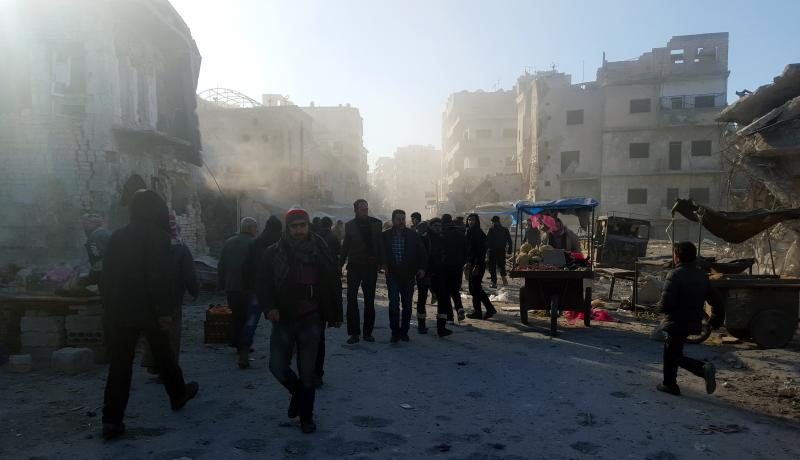
In January 2014, newly organized rebel factions in northern Syria declared war on Islamic State of Iraq and Syria (ISIS), and this culminated in the expulsion of the group from all of the city of Idlib and most of Aleppo. Rebel forces in Raqqa, Deir ez-Zor and Hasaka similarly rose up to root out the increasingly overbearing foreign organization.
The anti-ISIS offensive reportedly cost the rebels about 7,000 fighters. The group’s presence in Syria was seriously threatened, receding to Raqqa and pockets in Aleppo, Deir ez-Zor and Hasaka, until the summer of that year, when ISIS swiftly took over Deir ez-Zor and consolidated its presence in eastern Aleppo, southern Hasaka and Raqqa. It was helped by momentum and the advanced weapons it seized after it took over Mosul in mid-June and the Iraqi army there collapsed.
But the advancing hordes of ISIS still failed to reclaim control in Idlib or the rest of Aleppo. That remains true today. Local rebel factions have resisted the group’s incessant attempts to return. The rebels’ resilience in those areas is remarkable, especially considering ISIS’s control of al-Bab and Manbij west of Aleppo, two significant strongholds for, respectively, ISIS’s economic activities and its manpower.
But what ISIS failed to achieve with advanced weapons and momentum could be achieved with the changing military landscape in Aleppo and northern Syria at large. ISIS and other extremists may benefit from the weakening of local forces – the ones that proved effective in repelling ISIS’s attacks and infiltration of these areas – and become more dominant. This risk is particularly real if the Assad regime’s campaign disrupts the rebels’ hold without providing enough forces to effectively defend and police those areas. Almost all the regime’s ground advances in Aleppo were spearheaded by government-aligned foreign Shia militias. Those included the breaking of the sieges around the Kweiris airbase in November and around the towns of Nubbol and Zahraa on 3 February. In November, for example, Iranian Quds Force commander Qassem Sulaimani appeared in southern Aleppo, celebrating with a crowd who raised the flag of Iraq’s Harakat Hizbollah al-Nujaba paramilitaries.
Elsewhere the regime relies on army units or local militias, organized under the National Defence Forces, to take and then hold territory. But these local militias are effective in their own areas, not in opposition strongholds. The danger is that foreign militias could defeat rebel forces – with the crucial help of Russian airstrikes –without necessarily having the local support or experience to hold territory, which will inevitably create an opening for ISIS forces that have already been attempting to control those areas. The regime’s reliance on foreign militias suggests it does not have enough manpower to fight for it everywhere. More importantly, the growing public appearance of foreign sectarian militias on the frontlines of predominantly Sunni Aleppo is a gift for sectarian forces from the other side. Shia operatives have recently released videos using clearly sectarian language: one Shia cleric is shown shouting anti-Sunni slogans from a Sunni mosque pulpit in Aleppo. This is new in Aleppo, and has increased since November.
What makes such sentiments potentially more consequential is that Jabhat al-Nusra, too, has a strategy to increase its grip in Aleppo at the expense of other forces. Such attempts have taken tensions with local factions, sometimes including its ally, Ahrar al-Sham, to boiling point since October. After the regime broke the siege of Nubbol and Zahraa, a massive Jabhat al-Nusra convoy of around 100 vehicles moved inside Aleppo last week, as did one of its factions in Deraa in December and another from Azaz in August.
The continuing relentless airstrikes by Russia, the majority of which target opponents of ISIS, as Western officials have frequently said, is finally putting President Bashar al-Assad’s regime back on the offensive. While the campaign is unlikely to help the regime take back all of Aleppo in the foreseeable future, it will certainly shake up dynamics in this strategic city and adjacent areas. And extremists appear better prepared to steer these changes in their favour.
Hassan Hassan is a resident fellow at the Tahrir Institute for Middle East Policy, a think-tank in Washington DC, and co-author of ISIS: Inside the Army of Terror, a New York Times bestseller.
